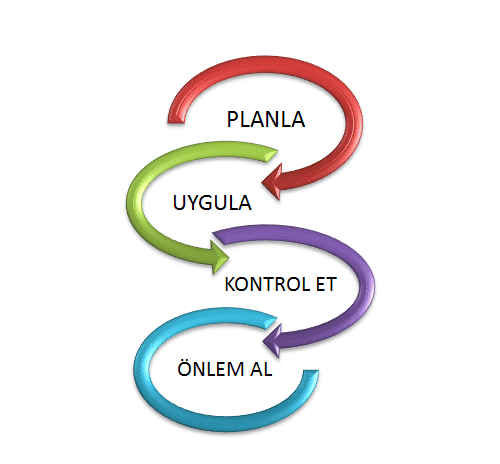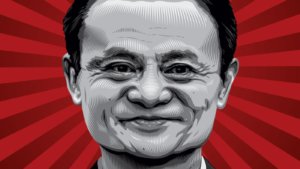The question of what is the Pukö cycle is a question that needs to be understood and answered correctly for business life. Today, it is a model that can be used not only for business life, but perhaps in every field. The reason for this is that it provides the maximum benefit from the work carried out. Pukö cycle, in its simplest sense, is a system that helps to finish a job with all its details. Thanks to this system, all parts of the business process can be taken under control. Thus, the productivity obtained from the work increases.
The PUKO cycle takes its name from a meaning each letter has. These letters consist of Plan, Do, Check, and Act, respectively. These are the parts that make up the cyclical system. Thanks to these steps, the entire business process can be followed meticulously. More importantly, it provides the opportunity to reduce the error to minimum levels. The Pukö cycle was systematized by William Deming and brought to the literature. It can also be used as the Shewhart and Deming cycle. It is a system produced to improve processes and eliminate errors. In this sense, it stands in a philosophical position in today’s business life.
What Functions Does the Pukö Loop Have?
We continue with the title of what is the Pukö cycle with the functions of the model. Perhaps the most important feature of the Pukö loop is that it can be used for multiple purposes. With Pukö, a desired work project can be designed from the ground up. Likewise, it can be a guide on how to continue an unfinished work. In addition, it also guides the debugging of a project with errors.
Considering all these features, it becomes clear that the Pukö cycle has a versatile structure. What’s more, it can be used to make improvements to a business where everything is going well. Today, the question of the Pukö cycle is gaining more and more importance. The reason for this is that the model goes beyond business life. It is now possible to see the Pukö cycle in many areas such as education, technology and sports. The application area has an unlimited view thanks to the features of the model. Pukö is an ideal model for improving the service quality and removing potential problems from the very beginning. We can now examine the Pukö cycle sections in turn.
Steps of the PUKO Cycle
1) Plan
The PUKO cycle begins with the plan step. The plan section is vital for the continuity of the model and system. It is the section that basically determines all the processes of the work. Possible mistakes, errors and risks are tried to be revealed in this section. Likewise, positive steps that are thought to accelerate the work are determined in this section. It can be considered as the stage of evaluating and revealing a mistake or opportunity during the study. It is a stage that requires accurate analysis and planning. What is the Pukö cycle is the first stage of our title, the plan, and the question of which and what.
What is the problem? What are the possible solutions to solve this problem? Which resources are most useful in this resolution process? Which of the available resources can increase success? With such questions, the plan section should be designed perfectly. When the plan section is completed carefully and perfectly, the problems are minimized in the last section. If the opposite occurs, unfortunately, the study will not have sufficient reality. Thus, the results obtained will decrease and the motivation of the team will decrease.
2) Apply
The Apply phase forms the second part of the Puko cycle. All data revealed and determined in the previous planning phase are implemented at this stage. The most important feature of the Implement part is that these plans must be fully implemented. How important the question of what is the Pukö cycle actually comes up here. It is the practical pouring of the plan part, which is shaped by the questions of which and what. The apply phase is important for smooth progress to the next check and take action phases. In addition, many statistical methods are used in the apply phase.
The data presented by these methods are filtered in the next step, the check section. Various alternative methods can be used at this stage in order to get the maximum efficiency from the Puko cycle. The first of these is the pilot application. It can sometimes be a problem to directly pass the suggestions put forward in the plan section. Instead, the inductive method can be used by using a pilot application. Thus, the knowledge gained in the pilot application further liberates your field of action in the next stages.
3) Check
As the name suggests, the check phase is the phase of evaluating the current process. In this sense, it is the most important part of our article titled What is the Pukö cycle. This is because the check phase tightly connects the previous two and the last phase. A certain gain has been achieved in the process up to the check phase. Accuracy and function checks of these gains are performed at this stage. All data and information must be reviewed before proceeding to the final section.
Based on this, a detailed reporting process is initiated. Standardization or retrospective questioning forms the infrastructure of this stage. If there is no problem in the plan and implement part, the data becomes standard at this stage. Otherwise, it is necessary to go back and arrange the reporting accordingly. It is determined to what extent the suggestions produced in the plan part are fulfilled in the second part, the practice. The idea of pilot implementation proposed in the second part becomes even more important in this sense. In this way, the transition to the final stage takes place.
4) Take Precaution
We have come to the last stage of our article titled What is the Pukö cycle and the model. Take Action forms the final loop of the Pukö loop pattern. It would not be wrong to say that all the data that has emerged up to this stage are once again filtered. This of course does not mean doing the work of the check phase. It is the stage where the work that is implemented and then controlled after it is planned is defended against possible threats. Performance and functionality problems are tried to be eliminated in the take action section. It would not be wrong to call it a Pukö cycle for the Take Action phase.
The reason for this is that all applications and samples made up to this stage are repeated. Take Action has its own plan, implement and control modules. Pukönü, whose name is a cycle, has no specific starting and ending point. For this reason, it consists of stages that go into each other and return to each other. The final state of the work obtained can be further improved or re-entered into the cyclical process. The loop should continue to run even when a standard run is reached.

















